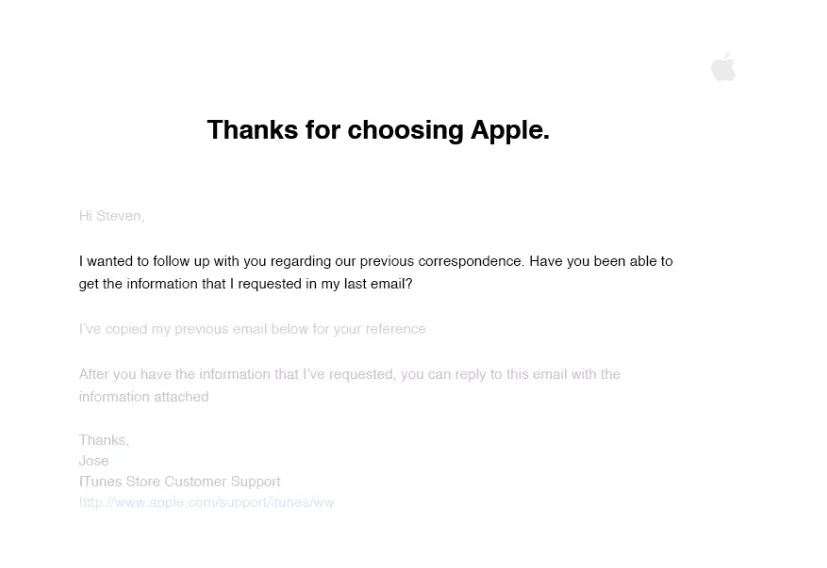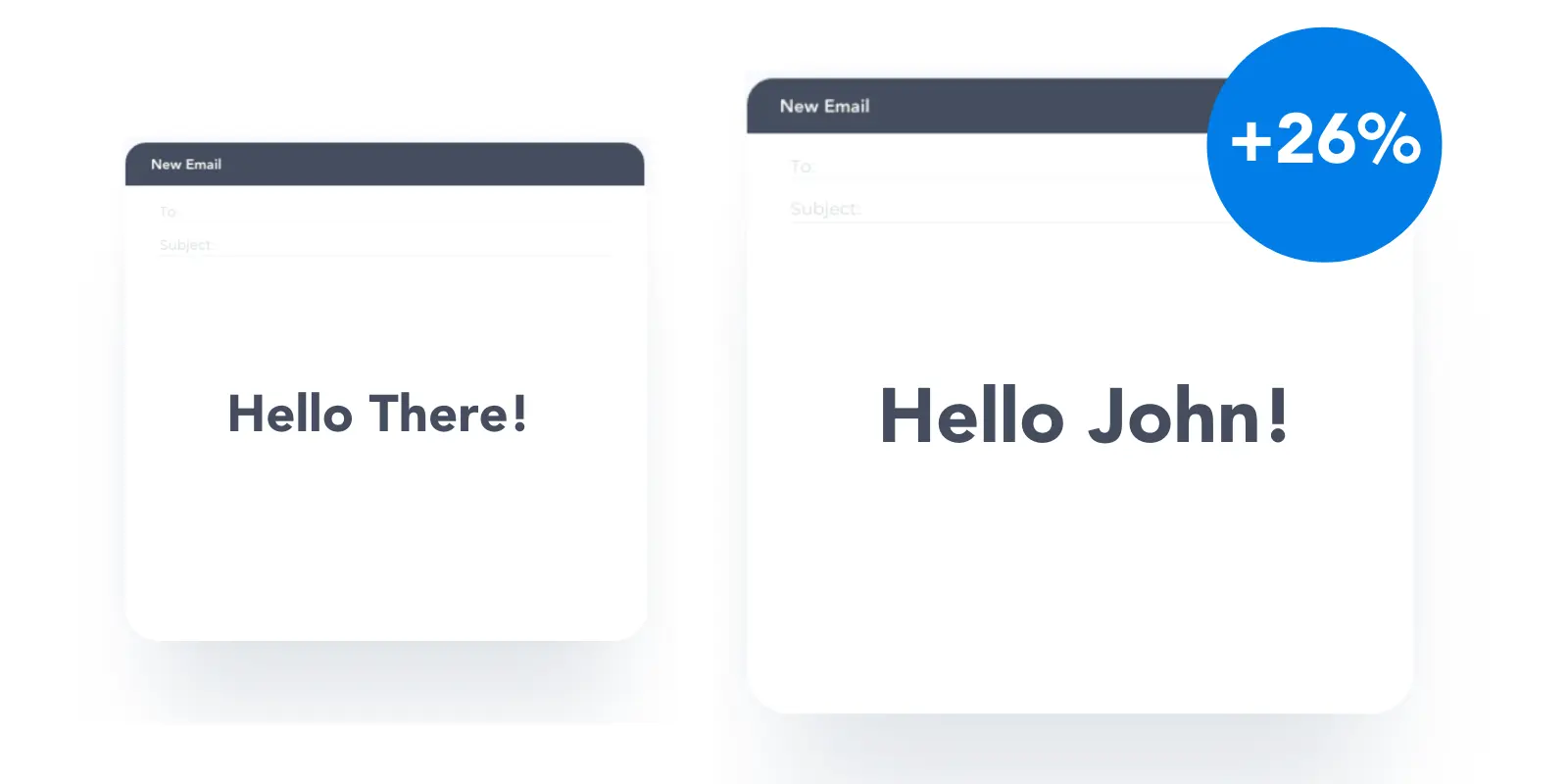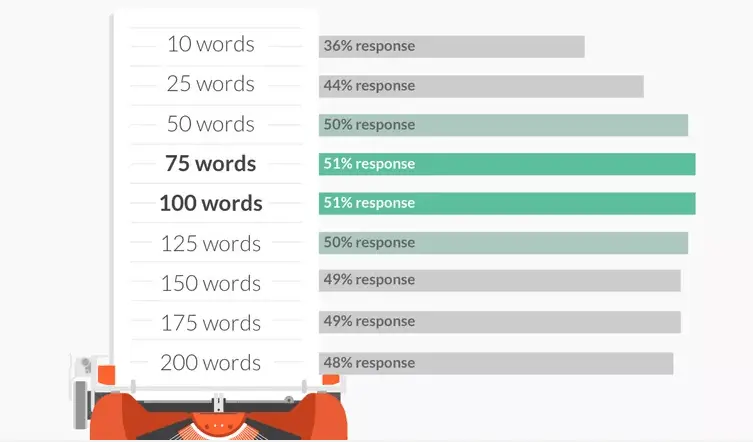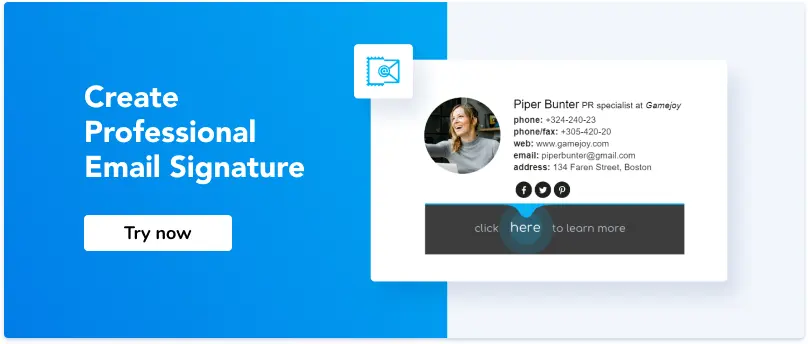How to Write a Follow-up Email After a Sales Proposal to Seal the Deal
1. Why follow-up is important
2. Write out all scenarios
3. Create proposal follow up sequences to each scenario
4. Close sequences with a breakup email
5. Choose the right frequency to follow up email after sending your proposal
6. Tips for better following up your sales proposal
Useful tools:
1. Newoldstamp - Email signature marketing
2. Mailchimp - Email builder and sender
3. Hubspot Email Marketing - Marketing automation platform
4. MailerLite - Landing page builder
5. Canva - Online tool for making designs
Do you know how to write a perfect follow-up email after a business proposal? And should you even bother sending follow-up messages in the first place? Yes, you need to because follow-ups can work. In fact, your follow-ups are going to count for a good chunk of your replies. And if you are not sure about this, just know that it’s not uncommon to get positive replies.
Why follow-up is important
People can say “Yes, I am still very much interested and thank you for contacting me!” even after the second or third touch. So don’t assume silence means you have the wrong audience or the wrong message (however, the message is indeed important). You may think: “Why would someone need so many messages before replying?” Well, there could be a couple of different scenarios. The recipient just didn’t open your email in time, and it got buried in their inbox. Or perhaps they got it when they were in the car, and they couldn’t write back to you. Or maybe they were not experiencing the problem that you mentioned in your email when you first contacted them, but later on, it was relevant. So why lose the opportunity to close the deal? Maybe you are already sending follow-ups but they are just unproductive, and you rarely get positive replies? Then keep reading this article to write your very best follow-up email. Also, don't forget to check these stats stating the importance of follow-up email. source: Supeoffice
source: Supeoffice
Write out all scenarios
To know the recipient’s interest level and be able to act accordingly, be sure to use email tracking. Depending on the recipient’s behavior, you can create more relevant and timely follow-ups.
Scenario #1: Prospect didn’t open your email with a sales proposal
If your prospect didn't open a previous email, you might have better luck with the follow-up. First of all, check if your subject line reflects the content of your email, is clear and offers any value. You don’t need to write something completely different. This follow-up should be a modified version of your first email. Send it one or two days later.
For example:
“Hi Mike,
I know that you are busy, so just floating this to the top of your inbox in case you missed it.”
[Add a summary of your initial email here]
“Dear Ms. Richart,
checking back on this. Please let me know if you’re still interested in our service."
[Add a summary of your initial email here]
[Add proper closing] Read about bad and good email sign-offs.
Scenario #2 Prospect read the email but didn't view your proposal
Do not send the same email as you sent the previous time. Try to address the recipient's pain points and emphasize that you can do this quickly and effectively. If you attached the file in the prior email, send them a link instead of the attachment this time. Keep in mind that a call to action (CTA) is one of the most critical parts of your follow-up email. When done correctly, it can convince your prospect to convert on your offer. Make the CTA as obvious as possible.
For example:
“Hello Marcus,
I was thinking a lot about the importance you place on growing your sales which we discussed last Friday, and it reminded me of the work we did with ABC company. In their case, we implemented the same tactics as we are suggesting for your organization. [You may want to add references here.] If you require additional information, just let me know, and I would be happy to help you.”
[Add a call to action like "Get my quote" or "View a proposal," etc.]
[Add proper closing]
Scenario #3 Prospect read the full email and proposal
If the recipient reviewed your email and proposal in full, get in touch with them as soon as possible. Even if they are already doing something else, they still remember your offer. Keep in mind that you should hammer your iron when it is glowing hot.
What to write in this follow-up?
Ask if they have any questions regarding the proposal and suggest a meeting to discuss it in more details.
For instance:
“Dear Natalie,
In our previous meeting, you mentioned how necessary it was for you to provide your entire team with new 8K displays by the end of July. How about getting back together and establishing a plan for moving forward with the proposal I sent you?”
[Add proper closing]
Scenario #4: Prospect read and stopped at a specific point of your proposal
If the recipient stopped reading your email or proposal after a specific section, you should wait a few hours to see if they don't pick up reviewing it further. If they didn't go back to look through your message, take action.
What to write in this follow-up email?
Provide the prospect with links to other relevant information about the section which the person stopped reading.
For example:
“Dear Matt,
I hope all is well. On Monday, I sent you the proposal you requested as part of your site redesign project. I just wanted to check if you have any questions and concerns related to the proposal that I can help you with?”
[Add proper closing]
Scenario #5: Prospect forwarded your email with a sales proposal
If the recipient has forwarded your business proposal email to other person/people, it's an excellent chance for you to start building relationships with them as well. If you don't know these people, then research them. And if you feel they might be interested, engage with them in the same way you do with other new leads.
For instance:
“Dear Mr. Hoffman,
I noticed that you showed interest in ABC software, and I hope that you found it helpful.
Here at ABC company, we help hospitals and private practices around the world streamline their workflow to allow staff to focus on clinical tasks rather than administrative duties. Please feel free to download a 15-days demo version of our software at [add a link here]. If you’d like to get more information, please, go ahead and give us a call or an email with your questions.”
[Add proper closing]
Create proposal follow up sequences to each scenario
When building a follow-up email sequence, keep in mind that you should take into consideration the actions of your potential buyers and interact with them accordingly. You need to figure out what sequence of events will lead your users to success with your product or service and base your follow-ups on those events.
Close sequences with a breakup email
Before you stop following up, consider saying “Thank you” and “Goodbye” to your prospects. When writing this last email, try to keep it on the emotionally positive or neutral side. Make sure there are no blame, criticism or disappointment in your message.
Why should you bother sending this breakup email? Of course, it won’t work with the prospects who never had any interest in your proposal at all. For those who were somewhat interested but didn’t have the time to review your offer and respond, it might serve as a little nudge that gets them engaged with you.
What to write?
“Dear Ms. Diaz,
I haven’t heard back from you about your website redesign project since March. I’m assuming your plans have changed, and you no longer want to proceed with this.
Keep [insert your company name] in mind if you want to move forward in the future.”
[Add proper closing]
“Dear Melissa,
I just wanted to let you know that I am going to close your file unless there is any reason for me to keep it open? Please let me know if you are interested. Otherwise, I will close it by the end of the week.”
[Add proper closing]
Choose the right frequency to follow up email after sending your proposal
Finding the right follow-up email frequency can be a delicate balance. If you send follow-ups too frequently, people may feel stalked. If you choose to wait too long, they may forget who you are. However, when you should send follow-up messages must be tied to each prospect’s behavior as much as possible. For example, if you know that the email and proposal were read in full, but the prospect hasn't replied, it's better to contact them within a few hours. Strike while the iron is hot!
Tips for better following up your sales proposal
#1 Use subject lines that reflect the content
A subject line is one of the first things a potential buyer sees when they receive your email. Ideally, the subject line should apply to the entire email, so be sure to deliver only one clear message for each email. Or you may use information from previous conversations.
For instance:
“As promised: compatibility information and the latest brochure.”
“Still interested in our service?”
#2 Provide your objectives in your follow-up
Before crafting your follow-up letter, clarify what your objective is to be able to create a more effective call-to-action.
#3 Keep your follow-ups personal
Talk directly to the recipient (“you might be interested,” “your project,” etc.), focusing on their interests instead of yours. Already know this client? Awesome! You can mention your last interaction with them. For example: “Thank you for your recent purchase of [product name].”, “It was a pleasure talking to you last week.” Also, show that you are willing to listen. Ask the prospect to reply with any suggestions, concerns, or other feedback.

In addition, don't forget about an email signature. You can create it using html email signature generator. This small element has a huge attention-dragging potential. If you add your photo to an email footer, people will feel a more human connection, so your reply rates will rise.
#4 Keep it brief
According to Boomerang, emails between seventy-five and one hundred words earn more replies than the longer or shorter ones.

#5 Track your emails
Track or not to track? Let's see the difference.
Mark has a standard sequence of messages he sends to each customer to follow up a proposal because he never tracks on emails and follows up "blindly." Isn't Mark annoying with his emails with irrelevant information?
Robert prefers keeping track of emails because understanding the recipient’s behavior helps him personalize a follow-up. He strives to deliver value, not only to remind about the proposal.
Conclusion
Many of us are hesitant to follow up because we think we might be annoying. But what if we are not? What if we are being helpful? Try to assume busyness rather than the annoyance. Then it’ll become much easier for you to follow-up, as you are actually doing your prospects a favor, you are delivering value, rather than “bugging.” Of course, some people may not like your emails. Well, you can’t make everyone happy. Hopefully, they will reply with a “no,” and you can both move further. Remember, you miss 100% of shots you don't take. So go ahead and follow-up!




